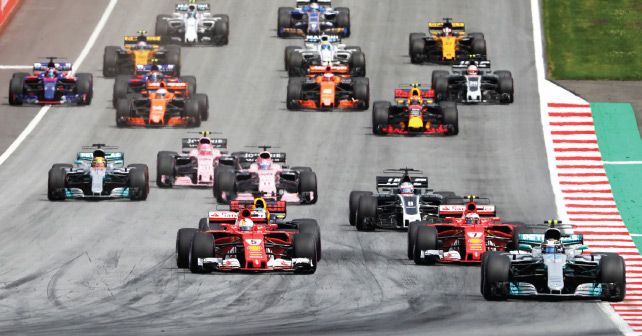
At the close of the year, Joe looks at ‘F1, the big picture,’ and sees plenty of silver linings.
So, the World Championship is done, and it’s been a good year for Formula 1 racing.
Okay, perhaps some might prefer a little more cut-and-thrust racing, but we’ve actually had a decent amount of that – and, for those who appreciate the more subtle side of racing, the strategic fights have been tense and exciting. Liberty Media has been quietly working at making things better, and while some complain that it’s all moving too slowly, others see the progress starting to happen.
There’s no doubt that things are better in terms of social media growth (there was previously none worth discussing) and fan engagement is increasing (or so the surveys show). There are new rules on the horizon and new races beginning to come aboard, notably Vietnam. There are new moves going on in the TV world, there are new sponsors and new initiatives, such as the Esports F1 series, the Pirelli hot laps programme, and so on. While this may not seem that exciting, it is at least a sport that’s on the move – especially when compared with how it was under CVC Capital Partners and Bernie Ecclestone, with the sport being treated as a cash cow and milked as much as possible.
Liberty is also busy trying to get the sport’s debt in better shape, reducing the interest payments and thus creating cash-flow to further reduce the debts. In short, the sport is in a pretty healthy state, at a time when many similar activities are suffering from declining audiences. The biggest problem remains the inequitable distribution of revenues amongst the teams, which means that the big three teams have now separated themselves from the rest to such an extent that the smaller teams now openly discuss being ‘the best of the rest’ as the only thing they can hope for. This is caused by the fact that the likes of Mercedes and Ferrari are each spending $1 million a day on Formula 1, which makes no sense at all – for anyone.
Thankfully, both companies have to answer to shareholders, and so there’s the potential from within the main companies to force the racing folk to reduce their spending. A budget cap is the obvious solution, and is completely logical – as winning at a lower cost means that the companies can boast of their cost-effectiveness. It’s not unlike the New Car Assessment Programme (NCAP) crash-tests, which were introduced. They were opposed by the car companies until they were convinced that it would help them sell cars and thus became a rating system for safety. The good news is that the big teams accept that the current spending is unsustainable and the problem is really only how to find a way to bring it down over a period of time. The devil is in the details because the big teams are forever looking at ways to maintain their advantages.
Some will argue that budget caps will impact those employed in the business, and there is truth in this argument, but the fact remains that good people will be snapped up by other teams if they come on to the market, which will strengthen the smaller teams and, in theory at least, bring them closer to the leaders – which is what everyone wants to see.
There are some who say that these are the wrong engines for F1 and that the sport should change to vast dinosaur devices that spit fire and punch out 2,000 horsepower. This is plain silly! The best way to get closer racing is to keep the rules the same. In this way, over time, the different engines will get closer together in terms of performance, because of the diminishing returns from research and development as limits are reached and knowledge spreads between the companies involved. The natural cycle of development will also mean that, if financial controls are introduced, it’s likely that new players will come in. A change in rules might also attract newcomers, but that would cost vast sums and would have the effect of playing into the hands of the companies with the most money to invest and so would increase the gap to the front of the grid, rather than reducing it. Perhaps it’ll take some time to get that point, as more performance is being found all the time, particularly, it seems, in the combustion processes of the internal combustion engines, as well as in the turbos and energy recovery systems.
This kind of technology should really be trumpeted by the people involved, because they are doing great things with the thermal efficiency of the automobile, making gains that are truly astonishing and which will eventually get into the mainstream, and help to produce more efficient road cars – which, in turn, will help to eke out the remaining oil until the bright sparks have figured out how to make hydrogen cars work properly. Some think that the electric car is the future, but they seem to overlook the fact that the rate of battery development is not increasing, but rather chugging along at the same speed it has always has, while the gains that do come are generally from more-and-more obscure and rare (and expensive) components, which will never allow the resulting technology to get to the market successfully.
These are discussions that F1 people do not need to have, as they concentrate on fighting their rivals, but these are things that should be highlighted by the series promoter and, perhaps more importantly, by the FIA.
Joe Saward has been covering Formula 1 full-time for 30 years. He has not missed a race since 1988.
























Write your Comment